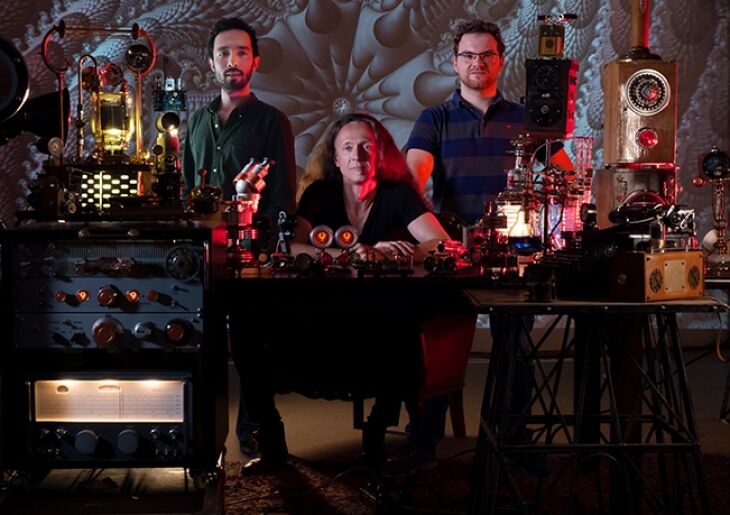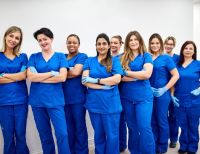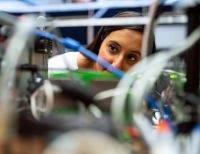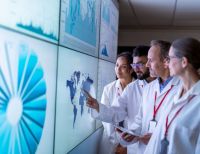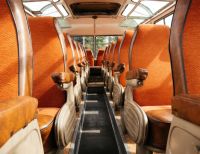UNSW Sydney-led research paves the way for large silicon-based quantum processors for real-world manufacturing and application.
Australian researchers have proven that near error-free quantum computing is possible, paving the way to build silicon-based quantum devices compatible with current semiconductor manufacturing technology.
“Today’s publication shows our operations were 99 per cent error-free,” says Professor Andrea Morello of UNSW, who led the work with partners in the US, Japan, Egypt, and at UTS and the University of Melbourne.
“When the errors are so rare, it becomes possible to detect them and correct them when they occur. This shows that it is possible to build quantum computers that have enough scale, and enough power, to handle meaningful computation.”
The team’s goal is building what’s called a ‘universal quantum computer’ that won’t be specific to any one application.
“This piece of research is an important milestone on the journey that will get us there,” Prof. Morello says.
Quantum operations with 99% fidelity – the key to practical quantum computers
Quantum computing in silicon hits the 99 per cent threshold
Prof. Morello’s paper is one of three published today in Nature that independently confirm that robust, reliable quantum computing in silicon is now a reality. The breakthrough features on the front cover of the journal.
- Morello et al achieved one-qubit operation fidelities up to 99.95 per cent, and two-qubit fidelity of 99.37 per cent with a three-qubit system comprising an electron and two phosphorous atoms, introduced in silicon via ion implantation.
- A Delft team in the Netherlands led by Lieven Vandersypen achieved 99.87 per cent one-qubit and 99.65 per cent two-qubit fidelities using electron spins in quantum dots formed in a stack of silicon and silicon-germanium alloy (Si/SiGe).
- A RIKEN team in Japan led by Seigo Tarucha similarly achieved 99.84 per cent one-qubit and 99.51 per cent two-qubit fidelities in a two-electron system using Si/SiGe quantum dots.
The UNSW and Delft teams certified the performance of their quantum processors using a sophisticated method called gate set tomography, developed at Sandia National Laboratories in the U.S. and made openly available to the research community.
Prof. Morello had previously demonstrated that he could preserve quantum information in silicon for 35 seconds, due to the extreme isolation of nuclear spins from their environment.
“In the quantum world, 35 seconds is an eternity,” says Prof. Morello. “To give a comparison, in the famous Google and IBM superconducting quantum computers the lifetime is about a hundred microseconds – nearly a million times shorter.”
But the trade-off was that isolating the qubits made it seemingly impossible for them to interact with each other, as necessary to perform actual computations.
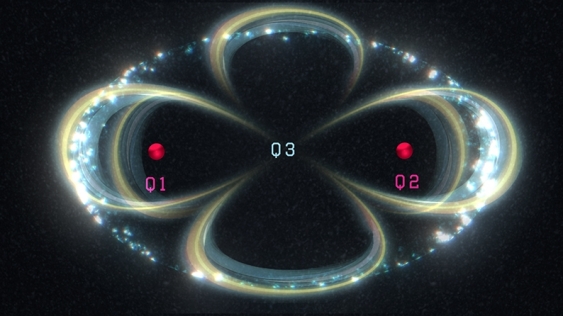
An artist's impression of quantum entanglement between three qubits in silicon: the two nuclear spins (red spheres) and one electron spin (shiny ellipse) which wraps around both nuclei. Image: UNSW/Tony Melov
Nuclear spins learn to interact accurately
Today’s paper describes how his team overcame this problem by using an electron encompassing two nuclei of phosphorus atoms.
“If you have two nuclei that are connected to the same electron, you can make them do a quantum operation,” says Mateusz Mądzik, one of the lead experimental authors.
“While you don't operate the electron, those nuclei safely store their quantum information. But now you have the option of making them talk to each other via the electron, to realise universal quantum operations that can be adapted to any computational problem.”
“This really is an unlocking technology,” says Dr Serwan Asaad, another lead experimental author. “The nuclear spins are the core quantum processor. If you entangle them with the electron, then the electron can then be moved to another place and entangled with other qubit nuclei further afield, opening the way to making large arrays of qubits capable of robust and useful computations.”
Professor David Jamieson, research leader at the University of Melbourne, says: “The phosphorous atoms were introduced in the silicon chip using ion implantation, the same method used in all existing silicon computer chips. This ensures that our quantum breakthrough is compatible with the broader semiconductor industry.”
All existing computers deploy some form of error correction and data redundancy, but the laws of quantum physics pose severe restrictions on how the correction takes place in a quantum computer. Prof. Morello explains: “You typically need error rates below 1 per cent, in order to apply quantum error correction protocols. Having now achieved this goal, we can start designing silicon quantum processors that scale up and operate reliably for useful calculations.”
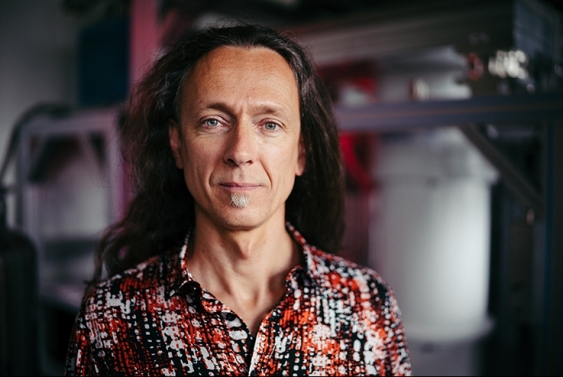
Prof. Andrea Morello. Photo: Sydney Quantum Acadamy
Global collaboration key to today’s trifecta
Semiconductor spin qubits in silicon are well-placed to become the platform of choice for reliable quantum computers. They are stable enough to hold quantum information for long periods and can be scaled up using techniques familiar from existing advanced semiconductor manufacturing technology.
“Until now, however, the challenge has been performing quantum logic operations with sufficiently high accuracy,” Prof. Morello says.
“Each of the three papers published today shows how this challenge can be overcome to such a degree that errors can be corrected faster than they appear.”
While the three papers report independent results, they illustrate the benefits that arise from free academic research, and the free circulation of ideas, people and materials. For instance, the silicon and silicon-germanium material used by the Delft and RIKEN groups was grown in Delft and shared between the two groups. The isotopically purified silicon material used by the UNSW group was provided by Professor Kohei Itoh, from Keio University in Japan.
The gate set tomography (GST) method, which was key to quantifying and improving the quantum gate fidelities in the UNSW and Delft papers, was developed at Sandia National Laboratories in the US, and made publicly available. The Sandia team worked directly with the UNSW group to develop methods specific for their nuclear spin system, but the Delft group was able to independently adopt it for its research too.
There has also been significant sharing of ideas through the movement of people between the teams, for example:
- Dr Mateusz Mądzik, an author on the UNSW paper, is now a postdoctoral researcher with the Delft team.
- Dr Serwan Asaad, an author on the UNSW paper, was formerly a student at Delft.
- Prof. Lieven Vandersypen, the leader of the Delft team, spent a five-month sabbatical leave at UNSW in 2016, hosted by Prof. Andrea Morello.
- The leader of the material growth team, Dr Giordano Scappucci, is a former UNSW researcher.
The UNSW-led paper is the result of a large collaboration, involving researchers from UNSW itself, University of Melbourne (for the ion implantation), University of Technology Sydney (for the initial application of the GST method), Sandia National Laboratories (Invention and refinement of the GST method), and Keio University (supply of the isotopically purified silicon material).
Funding acknowledgment
The UNSW-UTS consortium was created as part of the AUSMURI Project, a multi-university Australia-US initiative, funded in Australia through the Defence Department’s Next Generation Technologies Fund. The AUSMURI project aims at using multi-qubit systems to reduce the overall quantum gate errors. This result is a key breakthrough in the direction of high-fidelity quantum processors in silicon.
The US Army Research Office also supported the project at UNSW and University of Melbourne.
The ARC Centre of Excellence for Quantum Computation and Communication Technology supported the work at UNSW and Melbourne. The quantum device was fabricated using facilities in the UNSW node of the Australian National Fabrication Facility (ANFF).

